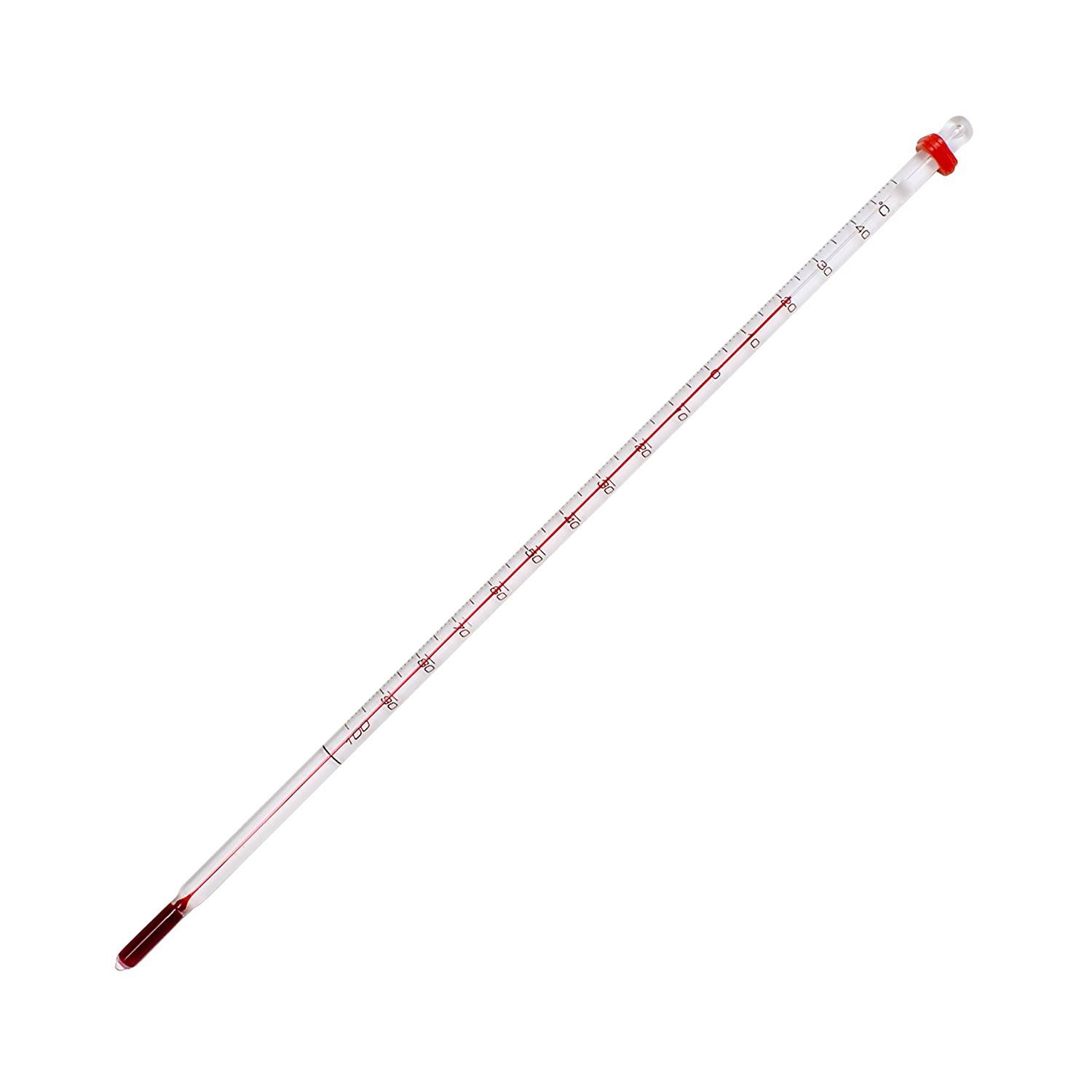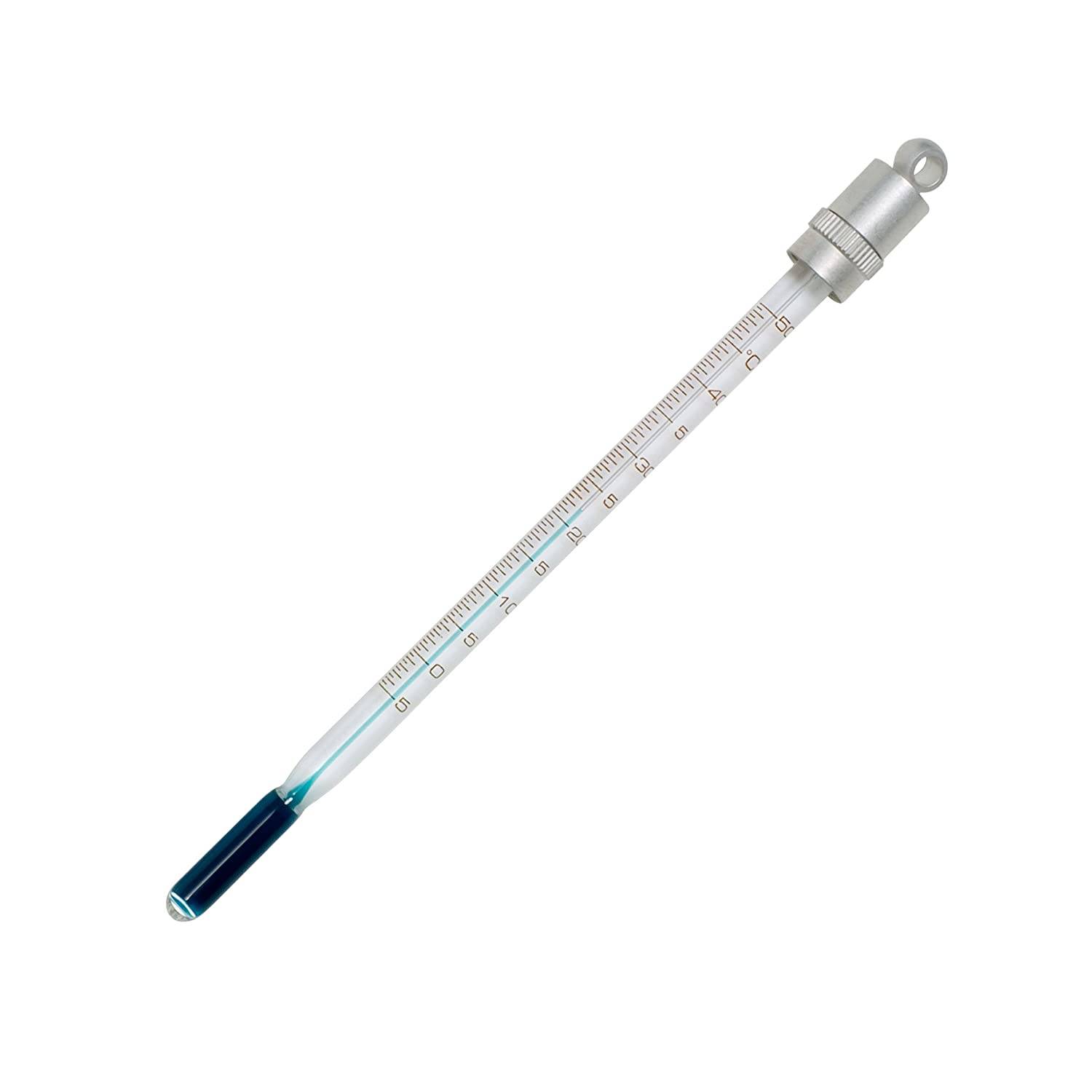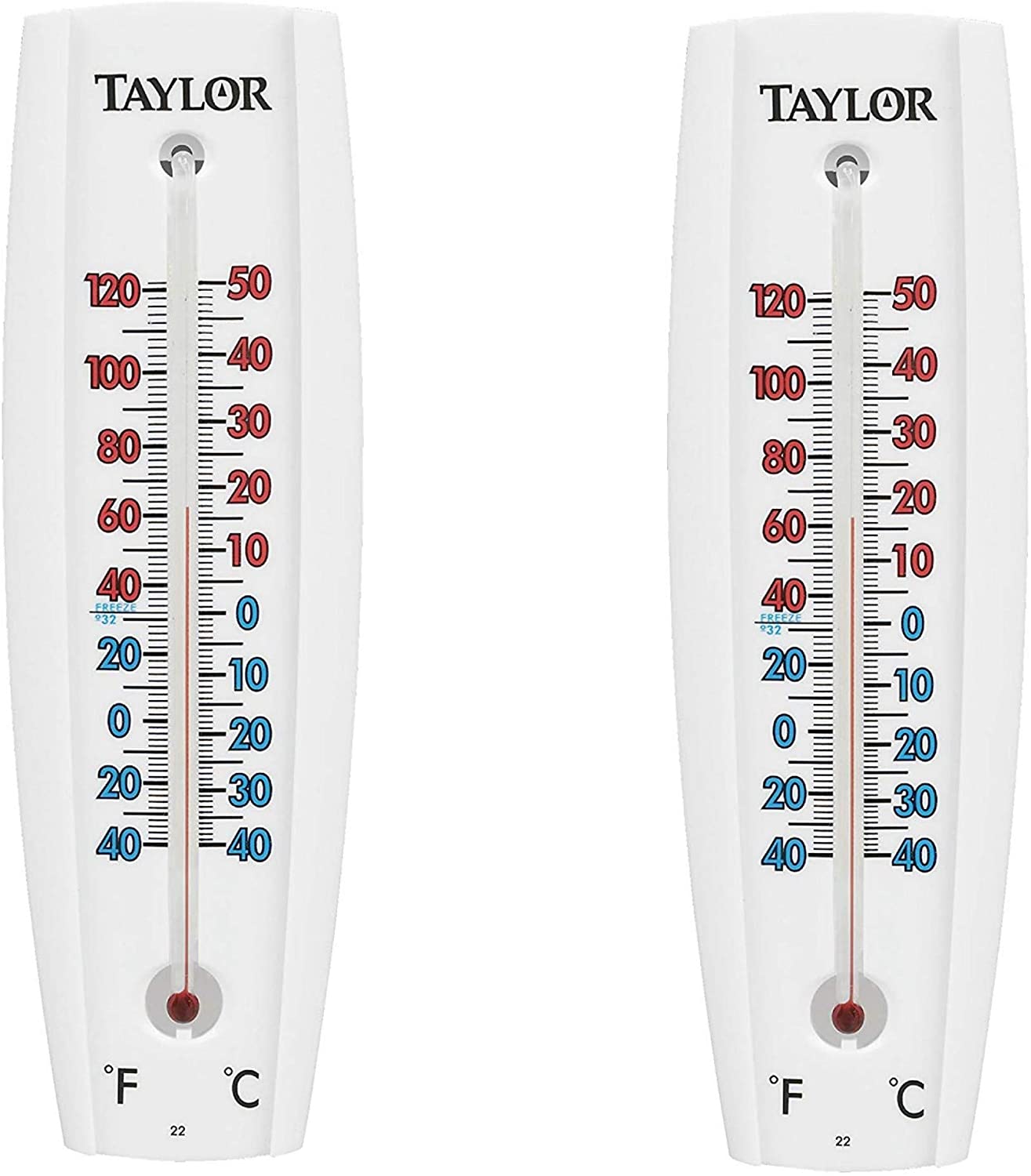Best Glass Thermometers
Have you thought about purchasing a glass thermometer? This type of thermometer contains a certified and tested liquid that determines temperature. In the past, that liquid was usually mercury. However, many glass thermometers today contain a red liquid called spirit instead of mercury. If the liquid in your glass thermometer is silver colored, it contains mercury. Otherwise, it does not. The glass thermometers that do not contain mercury are very safe and secure.
These thermometers are usually accurate and exact, and inspected regularly.
Glass thermometers are not as popular these days for checking body temperature. However, they are still used in schools and home schooling for science experiments, as well as in the food, beverage, and pharmaceutical industries and medical establishments. You can use a glass thermometer at home for science projects, and it is worthwhile showing children how to read a thermometer like this, instead of a digital version, once in a while. Glass thermometers can be used to check the temperature of your pool or aquarium, as well as if you are making candy, or if you need to check the temperature of your soil when gardening.
Let’s find out about the best glass thermometers currently on the market. All of the thermometers described below are for scientific, not medical, use.
Taylor Precision Products Orchard Minimum Registering Glass Thermometer
The Taylor Precision Products Orchard Minimum Registering Glass Thermometer is handy for checking your outdoor temperatures, especially during the winter. It is the thermometer professionals use in nurseries and to protect from frost in orchards, because it is very precise. With its range from 10 to 100 degrees Fahrenheit (in one degree increments), you can use it to help keep your plants safe from freezing temperatures.
It has a minimum temperature indicator, which enables it to keep track of the lowest temperature it reaches before you reset it. So, for example, if you use the thermometer to keep track of your soil temperature throughout the night, it will keep track of the lowest temperature so you can read it the next day. It is very easy to reset the temperature indicator.
The glass thermometer is housed in a wide stainless steel backing, and it can be easily fastened to surfaces using nails or screws. It is 9.8 inches tall, and weighs 3.7 oz. Its stainless steel design makes it long lasting and durable.
This device does not contain mercury, so you don’t have to worry about potential mercury poisoning. Instead, it uses a permacolor filling.
One drawback is the temperature markings are on the glass tube instead of the stainless steel holder. This makes it harder to read the markings.
Pros
- Mercury-free
- Very precise
- Records minimum temperature; easy to reset
- Durable stainless steel holder
Cons
- Temperatures markings may be hard to read
MHB Laboratory Thermometer
The Mountain Home Biological (MHB) Laboratory Thermometer is very versatile. It works well as a classroom or home laboratory thermometer because it is easy to read, with its white background. You can use it for your home school science class! It can be used to measure temperatures under dry or wet conditions (such as in a pool). It is reliable, high efficiency, and durable.
Because this thermometer is very affordable, many users choose to buy 10 at a time, to save on shipping.
This thermometer shows temperature readings in both Fahrenheit and Celsius, and has a range of 0 to 230 degrees Fahrenheit (-20 to 110 degrees Celsius).
It is 12 inches long and lightweight at 8 oz. The long length comes in handy because users find the thermometer needs to be very well immersed in a liquid in order to obtain an accurate reading.
Some users have found problems with accuracy, while others find this thermometer very accurate.
Users find it easy to calibrate this thermometer to freezing, but calibrating to the boiling point is a bit difficult.
This thermometer does not contain mercury and, for added safety, it has roll guards and storage tubes. It is a very safe thermometer to use, thus another reason why it is suitable in a school or home school setting. The rubber roll guards are also perfect for holding onto the thermometer, so your fingers will not affect the temperature measured.
Pros
- Mercury-free
- Easy to read with white background
- Very versatile
- Affordable
- Dual temperature scale (Fahrenheit and Celsius)
Cons
- Issues with accuracy
- Issues with calibration
3B Scientific U14295 Tube Thermometer
The 3B Scientific U14295 Tube Thermometer is another great brand for classroom or home school use. It is commonly used in schools. It comes in handy for science projects. You can also use it to check the thermometer of your aquarium, and there are a plethora of other uses.
This thermometer is simple and easy to use, and highly accurate. It reads the temperature quite quickly. However, it is a bit on the expensive side and it is rather delicate.
It is white with a red filling and it has an eyelet at the top. It measures 10.3 inches long and is very light at 0.6 oz.
Its temperature range is -10 to 110 degrees Celsius (in one degree increments). Because the range is in Celsius, this could prove to be a challenge for some users.
Pros
- Great for classroom use, home schooling, or science projects
- Easy to use
- Highly accurate
- Reads temperature quickly
Cons
- Temperature scale is in Celsius
- Delicate
- Expensive
CB Long Glass Thermometer
The CB Long Glass Thermometer comes in a pack of two 12-inch-long thermometers which do not contain mercury. This is a great device for a science lab or home school set up.
The temperature scale on this thermometer is only available in Celsius, which may be a challenge. It has a temperature range of -10 to 210 degrees Celsius (which translates to 14 to 410 degrees Fahrenheit), in one degree Celsius increments.
It weighs only 0.3 oz., which makes it super lightweight.
One drawback is users feel the temperature markings wear off easily and thus become hard to read.
Pros
- Lightweight
- Comes in a pack of two
- Great for science lab
- Does not contain mercury
Cons
- Temperature scale only in Celsius
- Temperature markings wear off easily
SEOH Thermometer
The SEOH Thermometer is another great one for school and home school. It is perfect for students. It is affordable and accurate.
This device is filled with red spirit rather than mercury, for safety.
Another major feature is it has two temperature scales, Celsius and Fahrenheit. It can read up to very high temperatures, and has a temperature range of 0 to 300 degrees Fahrenheit (-20 to 150 degrees Celsius), with gradations at every one degree.
It is 12 inches long and offers total immersion. It has a ring at the top so you can suspend the thermometer in your liquid. However, it lacks a metal backing for support. It is lightweight at 0.8 oz.
This thermometer is fragile, and should be handled with care.
Pros
- Affordable
- Accurate
- Mercury-free
- Two temperature scales, Celsius and Fahrenheit
- Has ring at top for suspension
Cons
- Fragile
- Lacks metal backing
EISCO PVC Glass Thermometer
The EISCO PVC Glass Thermometer is great for your home laboratory or at school. You can buy this thermometer individually or in a pack of five or 10. This is a spirit-filled thermometer so it is mercury-free.
The thermometer is 6.5 inches long which makes it considerably shorter than the others described in this article. It weighs 3.2 oz.
The temperature range is -40 to 50 degrees Celsius. It does not show temperature in Fahrenheit. This may prove to be a challenge.
One nice feature of this thermometer is it has a hole at the top, which you can use to hang it up easily. It comes surrounded by a PVC backing.
Pros
- Available individually or in packs of five or 10
- Mercury-free
- Hole at top for hanging
- Surrounded by PVC backing
- Ideal for school and home school labs
Cons
- Shorter than other thermometers
- Only shows temperature in Celsius
Glass thermometers FAQs
What should I look for in a glass thermometer?
There are a few things you should try to keep in mind when choosing a glass thermometer.
It should be made of high quality borosilicate glass, and should be hard, sturdy, and durable. It should be resilient and not break easily. Ideally, it should not contain mercury, but rather it could include another liquid such as spirit. In addition to safety, spirit offers a bright red color (compared to the silver color of mercury) and thus is easy to see.
It should be easy to use, and give stable readings. This means, as soon as you put the thermometer below the liquid level, it should be stable enough that you can easily read and write down the reading.
Try to look for a thermometer that is commonly used for the purpose you want to use it for. If you are in a particular industry, or if it is to be used for a school or home school science class or project, find out if it is commonly used for that purpose.
It should show the temperature scale you need – either Celsius or Fahrenheit. Some thermometers show both, and are called dual scale. Also make sure the temperature range serviced by the thermometer covers the range of temperatures you need it for.
How do I read a glass thermometer?
First make sure your thermometer is not broken or cracked. Next, make sure it is clean by washing with soap and water or wiping with alcohol. Then, shake the thermometer to push the liquid in the device down. Do this by grasping the tip of the thermometer and flicking your wrist swiftly.
Then insert your thermometer into the item you want to measure. Bend down to make sure your eye is level with the top of the liquid, and check that the temperature markings on the thermometer are facing you.
Read the temperature in Fahrenheit. The temperature scale will have a series of long and short lines. Each long line represents 1 degree Fahrenheit difference from the next long line. Read the temperature where the top of your liquid in the thermometer reaches.
How do I take care of a glass thermometer?
After use, always make sure to clean your glass thermometer. You can do this by using soapy water or wiping with alcohol using a cotton ball or swab. Do not use hot water, household cleaners, or bleach on your thermometer, and never put it in the dishwasher. Then store your thermometer in a safe place.
What if the glass thermometer breaks?
If your thermometer does not contain mercury, you can simply clean it up as you would normally clean up broken glassware with paper towels and soap. If it does contain mercury, call your local poison control center and they will advise you how to clean it up safely.
Photo credit: Suppakij1017/Shutterstock





